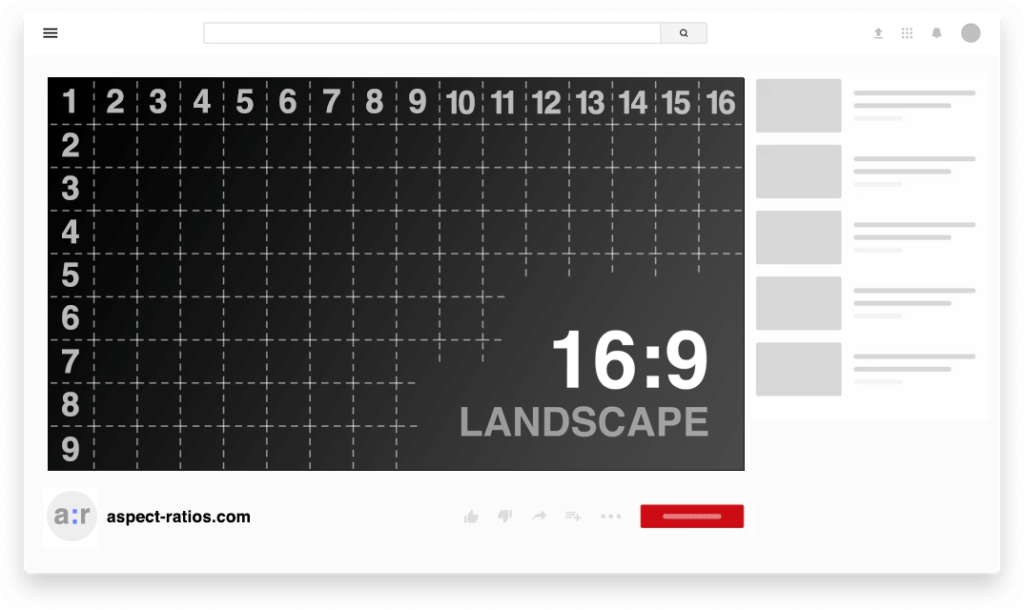

- #IMAGE ASPECT RATIO CALCULATOR HOW TO#
- #IMAGE ASPECT RATIO CALCULATOR MOVIE#
- #IMAGE ASPECT RATIO CALCULATOR PROFESSIONAL#
- #IMAGE ASPECT RATIO CALCULATOR TV#
This is especially problematic if there is important text or picture contained in the margins of the image.
#IMAGE ASPECT RATIO CALCULATOR PROFESSIONAL#
This is most professional option since it displays the original picture exactly as it was intended by the videographer or designer.
#IMAGE ASPECT RATIO CALCULATOR TV#
There are black bars on either side because the film was shot in 4:3, while your TV is 16:9.
#IMAGE ASPECT RATIO CALCULATOR MOVIE#
A perfect example of this is when you watch an old movie on a new TV. Letterbox – This fits the content into video wall frame proportionally, leaving black bars either vertically or horizontally.Shapes such as circles can be less forgiving with noticeable levels of image distortion. It is an acceptable option at 10% or less distortion. For example, if you upload a 16:9 video onto a 3:1 video wall, this will result in 64% distortion. Stretch to fill – This takes the image and forces it to stretch onto the screen’s ratio.There are three options for scaling 16:9 content onto a non-16:9 video wall: The result becomes worse with the farther the mismatch between ratios is. What happens if you try to display 16:9 content onto a video wall that is a different resolution? While it can be done, the end result is not ideal. Or say you just want to display 16:9 content onto a custom-ratio screen. Maybe your advertiser sent video wall content in the wrong ratio last minute. So 2×2, 5×5, 10×10 walls created with 16:9 panels all equal 16:9 ratios. In this case, a panel count of 1:1 actually equals 16:9 total ratio, since the screens are scaling up from 16:9. In contrast to 1:1 square panels, there are also individual panels that are 16:9 already, such as with LCD video walls. As you can see, the only exact way to achieve a 16:9 with square panels is with 16 panels wide by 9 panels high. The above sizing configurations will be close enough to a 16:9 ratio to be undetectable to the naked eye. Here are video wall sizes within the 16:9 safe zone: Your panel count width divided by your panel count height should equal in between 1.65 and 1.85. Square Video Wall Panel Count 16:9 Formula: Panel Width / Panel Height = Between 1.65 and 1.85 Display quality can be affected by pixel pitch as well. You want your video wall to be close to a 16:9 ratio and the 16:9 content will automatically stretch to fit the display. Luckily, there is some wiggle room with 16:9 ratios. Square (1:1) LED panels may pose a challenge when creating true 16:9 video walls, because the only way to achieve an exact 16:9 ratio is to have 16 panels wide by 9 panels tall, or an exact multiple of such. Then there are two more input spaces where width and height can be input.In many cases, video walls will be built into the 16:9 format to allow for seamless display of 16:9 content. Then I made two input boxes to input the ratio. Then I added some text that would serve as headings. I have added all the information to this box. First I designed the web page using some CSS code. That's why you need to have an idea about basic JavaScript.
#IMAGE ASPECT RATIO CALCULATOR HOW TO#
In this tutorial, we have shown how to create this CSS aspect ratio calculator program. In that case, you can easily know the other value by inputting any one of the lengths or heights here. In place of the following two inputs, you can input width and height.įor example, you want to make a box and you want to make that box on this 18: 9 ratio. First, there are two input boxes to add the percentage of Aspect Ratio, that is, you have to input the percentage at which you want to calculate this. I used some basic JavaScript to create this project. You can calculate it manually but this will be much easier with programming. Today in this article I have shown you how to create JavaScript Aspect Ratio Calculator very easily. Aspect Ratio is basically the relationship between the width and height of an element.Īny element formed by four angles has a certain aspect ratio. In this article, you will learn how to create an Aspect Ratio Calculator using HTML CSS, and JavaScript.


 0 kommentar(er)
0 kommentar(er)
